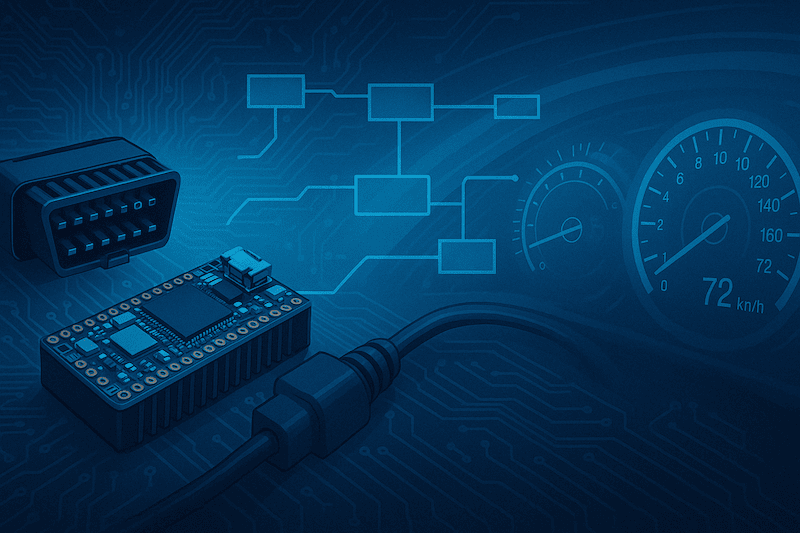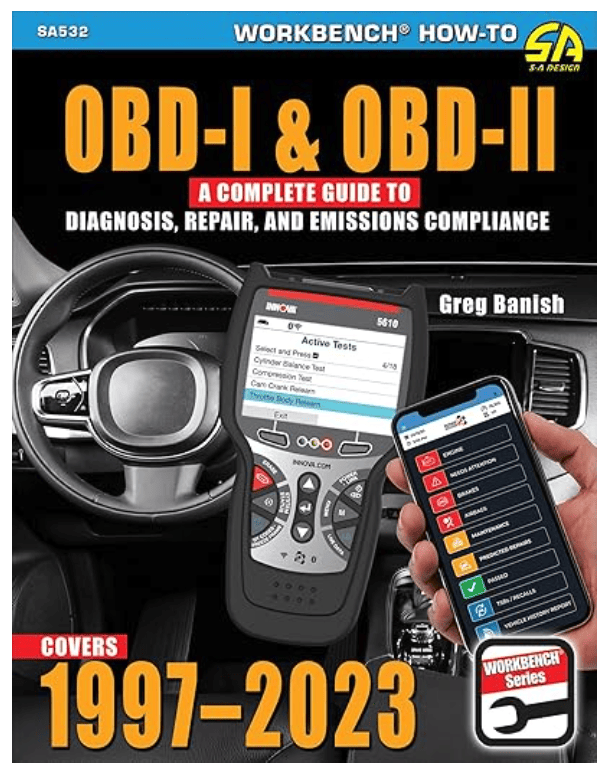Recent Posts
Technical and Development Report: Teensy 4.0 OBD-II CAN-Bus ECU Simulator
Posted by on
 1. Introduction
1. Introduction
As the automotive industry becomes increasingly software-driven, the demand for rapid prototyping, diagnostics development, and ECU (Engine Control Unit) emulation tools has grown exponentially. The Teensy 4.0 OBD-II CAN-Bus ECU Simulator from Copperhill Technologies offers a compact, powerful, and affordable solution for developers, educators, and engineers working on automotive diagnostic tools or embedded control systems.
By simulating a real vehicle ECU using standard OBD-II protocols over the CAN-Bus, the simulator provides a safe and controllable environment to develop and test OBD-II code readers, logging tools, telematics units, and data analysis systems—without the risks and limitations of using a live vehicle.
2. What is OBD-II? (On-Board Diagnostics II)
2.1 Definition and Origin
OBD-II is the second generation of On-Board Diagnostics, a standardized system introduced in 1996 (mandated in all light-duty vehicles sold in the U.S.) to monitor engine and emission control systems. It allows external tools to communicate with the car's internal systems to access performance data and diagnostic trouble codes (DTCs).
2.2 Key Features
-
Standard 16-pin Diagnostic Port (J1962): Typically located under the dashboard near the steering column.
-
Multi-Protocol Support:
-
SAE J1850 PWM (Ford)
-
SAE J1850 VPW (GM)
-
ISO 9141-2 (Chrysler, European, Asian)
-
ISO 14230-4 (Keyword Protocol 2000)
-
ISO 15765-4 (CAN) – used in all vehicles sold in the U.S. from 2008 onward.
-
-
Modes of Operation (aka Service Modes):
-
Mode 01: Real-time sensor data (e.g., RPM, speed, throttle position).
-
Mode 02: Freeze Frame data (conditions at the time a fault occurred).
-
Mode 03: Request stored DTCs.
-
Mode 04: Clear/reset stored DTCs and emissions-related data.
-
Mode 09: Request vehicle information (VIN, calibration ID).
-
2.3 Importance in Automotive Development
OBD-II is a cornerstone of vehicle maintenance and diagnostics. It is essential for:
-
Emissions testing
-
Fleet maintenance
-
Insurance telematics
-
Performance tuning
-
Predictive maintenance applications
-
Remote diagnostics and vehicle health monitoring
3. Overview: Teensy 4.0 OBD-II CAN-Bus ECU Simulator
3.1 Hardware Components
-
Microcontroller: The product is based on the Teensy 4.0, a high-performance, low-cost development board featuring:
-
NXP i.MX RT1062 MCU
-
Arm Cortex-M7 core running at 600 MHz
-
1024 KB RAM, 2 MB flash
-
USB High-Speed
-
Dedicated CAN controller
-
-
OBD-II Diagnostic Connector: 16-pin female (standard J1962).
-
Power Supply:
-
Accepts +12 VDC input.
-
Protected and regulated internally for safe operation.
-
Includes wall adapter for lab use.
-
-
Six Potentiometers:
-
Each simulates adjustable sensor values (e.g., temperature, RPM, throttle).
-
Real-time interaction: Adjust the values manually and watch them appear on diagnostic tools.
-
3.2 Firmware & Software
The ECU Simulator ships preloaded with custom OBD-II firmware that mimics a real vehicle ECU. It supports:
-
CAN protocol: ISO 15765-4 at 500 kbps.
-
OBD-II Modes 01, 02, 03 (additional modes can be added by user).
-
Parameter IDs (PIDs): Standard PID support for real-time data access (RPM, speed, load, coolant temp, fuel trims, etc.).
-
DTC Simulation:
-
Set permanent or pending trouble codes.
-
Clear codes via Mode 04 (if implemented).
-
-
Open Source: All source code is accessible, allowing developers to modify or extend the simulator’s functionality.
4. Use Cases and Applications
4.1 Embedded System Development
-
Test custom firmware for data loggers, black boxes, telematics devices, or fleet monitoring tools.
-
Simulate real-world OBD-II responses during lab development.
4.2 Diagnostic Tool Development
-
Evaluate and validate custom scan tools or OBD-II mobile apps.
-
Create test scenarios for reading, clearing, and simulating DTCs.
4.3 Educational Training
-
Ideal for vocational schools, colleges, and technical training centers.
-
Allows safe, hands-on learning of OBD-II diagnostics without vehicle access.
4.4 Quality Assurance and Regression Testing
-
Reproduce specific test scenarios using DTC injection.
-
Perform regression testing for firmware or software that interfaces with vehicle diagnostics.
5. Benefits and Advantages
5.1 Safe Development Environment
-
No risk of damaging a vehicle’s electronics.
-
Ideal for testing software that manipulates OBD-II data (e.g., emissions reset, freeze frame capture).
5.2 Time and Cost Efficiency
-
No need to access or purchase multiple vehicles.
-
Reduced downtime during tool calibration and firmware updates.
5.3 Customizability
-
Developers can add proprietary PIDs or support enhanced diagnostics used by specific OEMs.
-
Extensible for IoT and cloud-based diagnostics projects using the Teensy’s USB or serial interfaces.
5.4 Portability
-
Compact form factor.
-
Easily deployable across lab stations, classrooms, or field environments.
6. Competitive Edge
While other simulators exist on the market, few offer the performance-to-cost ratio of this solution. The Teensy 4.0 platform is significantly more powerful than typical Arduino-based systems, offering high-speed processing that enables the simulation of complex data streams and custom protocols.
Compared to other commercial-grade solutions, which may cost hundreds or thousands of dollars and come with proprietary restrictions, this product stands out as a highly affordable, open, and extensible tool for a wide range of users.
7. Conclusion
The Teensy 4.0 OBD-II CAN-Bus ECU Simulator is more than just a development tool—it’s an educational platform, a diagnostics testing bench, and a foundation for future automotive and IoT innovation. With its rich feature set, developer-friendly design, and support for the most widely used diagnostic standard in the automotive industry, this simulator empowers engineers, educators, and hobbyists to innovate with confidence.
Copperhill Technologies has once again delivered a solution that bridges the gap between professional-grade development and maker-level accessibility—making this simulator an indispensable tool for anyone working with vehicle diagnostics, CAN bus applications, or embedded automotive systems. More information...
In OBD-I & OBD-II: A Complete Guide to Diagnosis, Repair, & Emissions Compliance, author and former diagnostics and performance calibration engineer Greg Banish offers an insider's look into the inner workings of modern OEM diagnostic systems. The book serves as both a foundational learning tool and a practical reference for enthusiasts, technicians, and professionals who seek to understand how and why the “Check Engine” light appears—and how to resolve the underlying issues.
Rather than overwhelming the reader with an exhaustive list of every possible repair, the guide focuses on helping users understand the logic behind the electronic control unit (ECU). By breaking down ECU functions in clear, plain language, Banish offers strategies to approach diagnostics methodically. Readers are guided through the ECU’s decision-making process—what data it monitors, how it responds to irregularities, and how faults are stored and reported.
Practical examples drawn from the author’s real-world experience enrich the content, offering critical insights that help readers avoid common pitfalls. These examples provide valuable context and highlight troubleshooting techniques that can save hours of time and prevent unnecessary repairs.
In addition to diagnostics and repair, the book provides valuable guidance for vehicle modification. For performance enthusiasts who aim to upgrade or tune their vehicles, Banish outlines how to do so without compromising emissions compliance or triggering fault codes that could lead to inspection failure. More information...
 Loading... Please wait...
Loading... Please wait...

